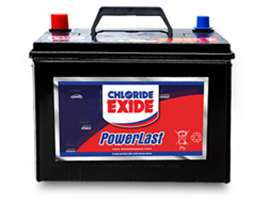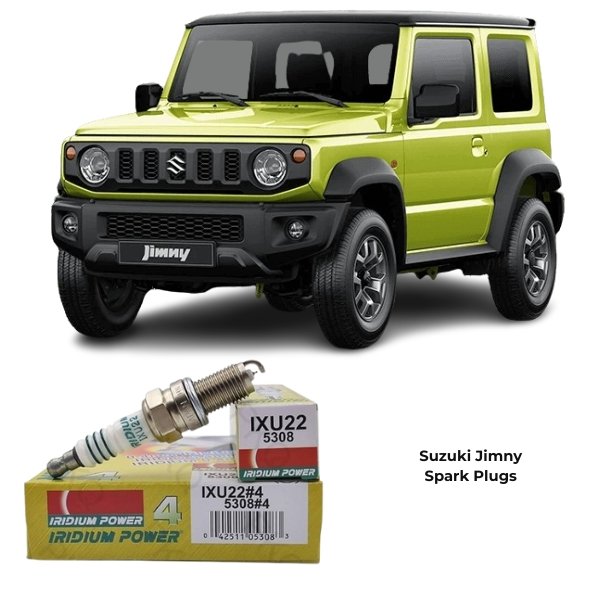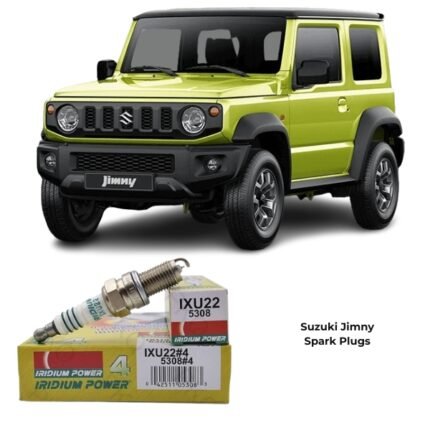Get Suzuki Jimny Spark Plugs ixu22 in Kenya
The spark plug is one of the most essential components in the ignition system of an internal combustion engine. Though small in size, it plays a critical role in powering a vehicle by igniting the air-fuel mixture inside the combustion chamber. Without spark plugs, petrol-powered engines would not start or run efficiently. They are responsible for transforming electrical energy into a spark that ignites the compressed air-fuel mixture, creating the explosion that powers the engine’s pistons.
A properly functioning spark plug ensures efficient combustion, smooth acceleration, and optimal fuel economy. Conversely, worn or faulty spark plugs can lead to misfires, reduced power, and increased fuel consumption.
1. Purpose and Function
The primary function of a spark plug is to ignite the air-fuel mixture inside the engine’s combustion chamber. The plug receives a high-voltage current from the ignition coil, creating an electric arc across a small gap between its electrodes. This spark ignites the compressed mixture of air and fuel, causing a controlled explosion that pushes the piston downward and generates power.
Every combustion cycle depends on the spark plug’s ability to fire at precisely the right moment. The timing, consistency, and strength of this spark directly influence the engine’s performance, fuel efficiency, and emissions.
In short, spark plugs serve as the gateway between the ignition system and the combustion process, turning electrical energy into mechanical motion.
2. Construction and Components
Spark plugs are precision-engineered devices designed to operate under extreme conditions of heat, pressure, and chemical exposure. A typical spark plug consists of the following key parts:
-
Terminal: The topmost end that connects to the ignition coil via a high-tension wire or ignition boot.
-
Insulator: Made of ceramic material, it electrically isolates the high-voltage terminal from the metal shell while withstanding high temperatures.
-
Ribs: Grooves on the insulator that prevent electrical leakage along its surface.
-
Metal Shell: The outer body of the spark plug, usually made of steel, that screws into the cylinder head. It also helps dissipate heat from the insulator.
-
Sealing Gasket: Ensures an airtight seal between the spark plug and the engine’s cylinder head.
-
Center Electrode: Conducts the electrical current from the terminal to the spark gap. The tip is often made from materials like copper, platinum, or iridium for durability and heat resistance.
-
Ground (Side) Electrode: Welded to the metal shell and positioned near the center electrode to form a spark gap.
-
Spark Gap: The space between the center and ground electrodes where the spark occurs. The size of this gap determines how easily the spark can jump across and ignite the mixture.
Each of these components is precisely designed to withstand the intense thermal and mechanical stresses of engine operation.
3. Working Principle
The spark plug operates as part of the engine’s ignition system in a sequence of electrical and mechanical events:
-
The ignition coil generates a high-voltage electrical charge, often between 20,000 and 40,000 volts.
-
This charge travels through the ignition cable or coil pack to the spark plug’s terminal.
-
The voltage builds until it overcomes the resistance of the air gap between the electrodes.
-
A spark jumps across the gap, reaching temperatures of over 2,000°C, igniting the compressed air-fuel mixture.
-
The resulting explosion forces the piston downward, generating mechanical energy.
This process happens continuously and rapidly—typically thousands of times per minute, depending on engine speed.
4. Types of Spark Plugs
Different engines and operating conditions require specific types of spark plugs. The main variations include:
-
Copper Spark Plugs: Feature a copper core with a nickel alloy electrode. They provide excellent conductivity and heat dissipation but have a shorter lifespan, typically around 20,000–30,000 km.
-
Platinum Spark Plugs: Have a platinum disc welded to the center electrode. They last longer (up to 100,000 km) and perform better under extreme heat.
-
Double Platinum Spark Plugs: Contain platinum on both the center and ground electrodes for extended life and improved durability in modern ignition systems.
-
Iridium Spark Plugs: Made with iridium tips, they are the most durable, lasting up to 150,000 km. They offer superior ignition performance and resistance to wear.
-
Silver Spark Plugs: Known for excellent thermal conductivity, often used in high-performance engines.
-
Resistor Spark Plugs: Incorporate a resistor to reduce electromagnetic interference (EMI) with electronic systems and radios.
Choosing the right type of spark plug depends on engine design, fuel type, and desired performance characteristics.
5. Importance in Engine Performance
Spark plugs play a vital role in several aspects of engine operation:
-
Fuel Efficiency: Proper combustion ensures maximum energy extraction from fuel, reducing waste and improving mileage.
-
Smooth Acceleration: Consistent firing across all cylinders ensures smooth and responsive throttle performance.
-
Engine Longevity: Efficient combustion minimizes carbon deposits, keeping the combustion chamber clean and reducing engine wear.
-
Emission Control: Complete combustion lowers the release of unburned hydrocarbons and carbon monoxide, making the engine more environmentally friendly.
-
Reliable Starting: Good spark plugs provide strong ignition energy for quick and smooth engine starts, even in cold conditions.
6. Heat Range and Its Significance
Each spark plug has a specific heat range, referring to its ability to dissipate heat from the combustion chamber.
-
Hot Spark Plugs: Retain more heat and are suitable for low-speed or short-trip driving, where the engine doesn’t reach very high temperatures.
-
Cold Spark Plugs: Disperse heat quickly and are used in high-performance or turbocharged engines to prevent overheating and pre-ignition.
Choosing the correct heat range is crucial; using the wrong one can cause problems such as fouling (if too cold) or engine knocking (if too hot).
7. Common Signs of Worn or Faulty Spark Plugs
Like all consumable engine components, spark plugs wear out over time and must be inspected and replaced periodically. Common signs of bad or failing spark plugs include:
-
Rough Idling: Irregular firing leads to engine vibration and uneven running.
-
Hard Starting: Worn plugs require higher voltage to spark, making starting difficult.
-
Poor Fuel Economy: Incomplete combustion leads to wasted fuel.
-
Engine Misfires: Caused by weak or inconsistent sparks.
-
Lack of Power: Reduced ignition performance affects acceleration and responsiveness.
-
Increased Emissions: Unburned fuel results in higher hydrocarbon emissions.
-
Check Engine Light: Modern vehicles may trigger a diagnostic code for ignition issues.
Regular inspection prevents these issues and ensures consistent engine health.
8. Maintenance and Replacement
Maintaining spark plugs involves routine inspection, cleaning (where applicable), and timely replacement. The recommended service interval varies by vehicle and plug type but generally falls between 30,000 and 100,000 kilometers.
Steps for Replacement:
-
Allow the engine to cool completely.
-
Remove the ignition wires or coil packs carefully.
-
Use a spark plug socket to remove old plugs.
-
Inspect each plug for color and deposits — these can reveal engine conditions such as oil burning or fuel mixture problems.
-
Check the gap on new plugs using a feeler gauge and adjust if necessary.
-
Apply a small amount of anti-seize compound to the threads.
-
Install and torque the new plugs to manufacturer specifications.
-
Reconnect the ignition wires or coils.
Proper replacement restores efficiency, power, and fuel economy.
9. Innovations and Modern Technology
Modern spark plug technology has advanced significantly to meet the demands of high-efficiency engines. Iridium and platinum plugs provide longer service life and consistent performance. Laser-welded fine electrodes reduce voltage requirements while maintaining strong sparks.
Some modern vehicles use multi-ground electrode designs for better ignition reliability, while surface-gap spark plugs eliminate the need for a traditional side electrode.
In hybrid and performance engines, plugs are now designed for precise heat control, anti-fouling resistance, and reduced electrical interference to ensure smooth operation alongside sensitive electronics.
10. Consequences of Neglect
Failing to maintain or replace spark plugs can lead to serious issues, including:
-
Reduced Engine Efficiency: Incomplete combustion wastes fuel.
-
Catalytic Converter Damage: Unburned fuel entering the exhaust system can overheat and damage the converter.
-
Engine Misfires: Causing rough performance and potential damage to ignition coils.
-
Difficulty Starting: Especially in cold or wet conditions.
-
Excessive Carbon Build-Up: Leading to poor engine breathing and performance decline.
Regular replacement of spark plugs ensures optimal engine health, reduced maintenance costs, and consistent performance.
Follow us on Facebook for more parts.





Reviews
Clear filtersThere are no reviews yet.